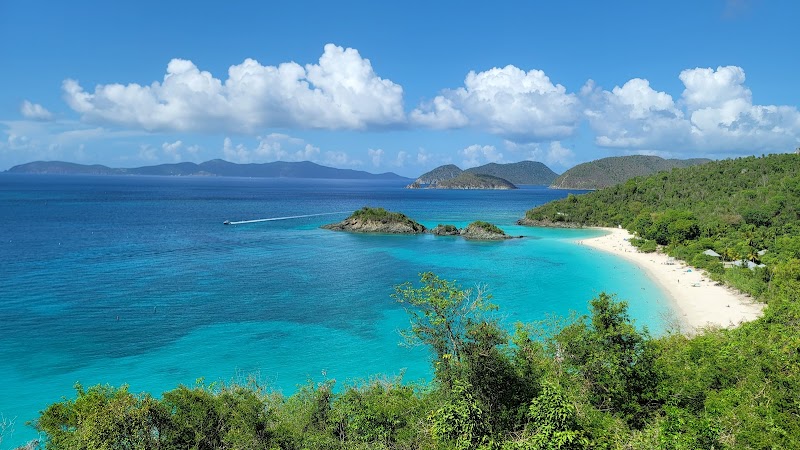Exploring the Best Hiking Trails Near Río Grande, Puerto Rico
Explore the varied hiking trails near Río Grande, where tropical forests, scenic vistas, and cascading waterfalls create a dynamic outdoor experience. Find practical advice and trail details to prepare for your next adventure in this vibrant region.
Hydrate Strategically
Carry at least 2 liters of water; tropical humidity can dehydrate quicker than you expect.
Wear Trail-Ready Footwear
Choose hiking boots with good grip for wet, uneven terrain common on Río Grande trails.
Start Early to Avoid Heat
Begin hikes before 9 AM to take advantage of cooler morning air and avoid midday sun exposure.
Check Weather Forecasts
Sudden showers can make trails slippery; plan accordingly and carry rain protection.
Exploring the Best Hiking Trails Near Río Grande, Puerto Rico
Discover Hiking Near Río Grande: Your Gateway to Adventure
Río Grande offers some of the most accessible and diverse hiking trails in the region. Whether you plan to embark on a moderate trek through lush forest canopies or a more challenging climb rewarding you with panoramic views, this area delivers adventure with a practical edge. Trail distances range from easy 2-mile loops to tougher 7-mile out-and-backs, with elevation gains between 500 to 1,200 feet, accommodating a range of experience levels.
The terrain alternates between soft dirt paths and rocky patches, demanding sturdy hiking shoes and careful footing. As you hike, the forest seems to breathe around you, with streams daring you to step closer and breezes pushing you forward.
Key trailheads start near the El Yunque National Forest boundary, a vital keyword for searches related to hiking in Río Grande. Highlight trails like Juan Diego Trail, accessible from Río Piedras, offer a 3.5-mile route with a steady 600-foot elevation climb through tropical hardwood forest. For those seeking longer adventures, the Big Tree Trail combines forest ambiance and a waterfall payoff in a 4.2-mile round trip hike.
Ideal hiking seasons span from November to April when rainfall decreases and temperatures settle into comfortable ranges. Prepare by carrying ample water, donning breathable layered clothing, and allocating your hike to early mornings or late afternoons to avoid midday heat.
Whether you’re a beginner or an experienced hiker, Río Grande’s trails provide a blend of challenge and serenity. The consistent presence of rich wildlife—coquí frogs signaling nearby and tropical birds darting overhead—makes every step a discovery.
Practical tip: check local weather updates before heading out, as sudden showers can make trails slippery and streams more forceful. Start your hike prepared, respect the natural surroundings, and engage with a landscape that resists easy mastering—an adventure fiercely itself.
Hiking Keywords SEO Focus
Hiking in Río Grande, Río Grande hiking trails, El Yunque National Forest hikes, outdoor activities Río Grande, Puerto Rico hiking, best hiking near Río Grande, tropical forest hikes, family-friendly hiking Río Grande, coastal and forest hikes, moderate to challenging hiking trails, waterfall hikes near Río Grande, scenic trails with views, eco-hiking Río Grande, Puerto Rico hiking adventure.
Incorporate these keywords naturally into guides, maps, blog content, and trip reports for targeted SEO benefits that connect outdoor enthusiasts with the distinctive hiking opportunities found in Río Grande.
Nearby Trips
All Adventures
Boat Charters
Water Activities
Adventures near Río Grande
Discover the unique and memorable adventures that make Río Grande special.
Frequently Asked Questions
Are the hiking trails in Río Grande suitable for families with children?
Yes, some trails like the Juan Diego Trail have manageable distances and moderate elevation gain suitable for older children with basic hiking experience. Always supervise young hikers and prepare for tropical weather conditions.
What wildlife might I encounter while hiking near Río Grande?
Expect to hear the distinctive calls of coquí frogs, glimpse colorful tropical birds such as the Puerto Rican tody, and possibly spot small reptiles. Early mornings and late afternoons are best for wildlife sightings.
Is it necessary to get permits for hiking near Río Grande?
Most trails near Río Grande, especially those in El Yunque National Forest, require a small park entrance fee rather than a permit. Check current regulations ahead of your visit as policies may change.
Are the trails marked and easy to follow?
Trails near Río Grande are generally well-marked with clear signage, but some secondary paths can be faint. Carry a map or GPS device and have basic navigation skills to avoid getting off track.
Can I hike year-round in Río Grande?
Hiking is possible year-round, but the dry season from November to April is most comfortable. The rainy season can bring slippery conditions and sudden storms, posing extra challenges.
What cultural or historical features exist along the trails?
Certain trails pass by remnants of indigenous Taíno sites and old sugar mill ruins, offering a glimpse into the region’s heritage. Trail signage often highlights these points of interest.
Recommended Gear
Sturdy Hiking Boots
Provides ankle support and traction on slippery, uneven ground.
Water Bottle or Hydration Pack
Ensures adequate hydration in humid tropical conditions.
Light Rain Jacket
Protects from sudden tropical downpours common in spring months.
Wide-Brimmed Hat
Shields face and neck from intense sun during summer hikes.
Local Insights
Hidden Gems
- "La Coca Falls viewpoint—less crowded, offering dramatic waterfall views."
- "El Yunque peak lookout—provides wide-reaching vistas often missed on popular routes."
Wildlife
- "Coquí frogs"
- "Puerto Rican tody"
- "Emerald Anole lizards"
History
"The area around Río Grande was historically inhabited by the Taíno people, and later saw development through sugar plantations. Scattered archaeological sites and ruins are detectable for observant hikers."
